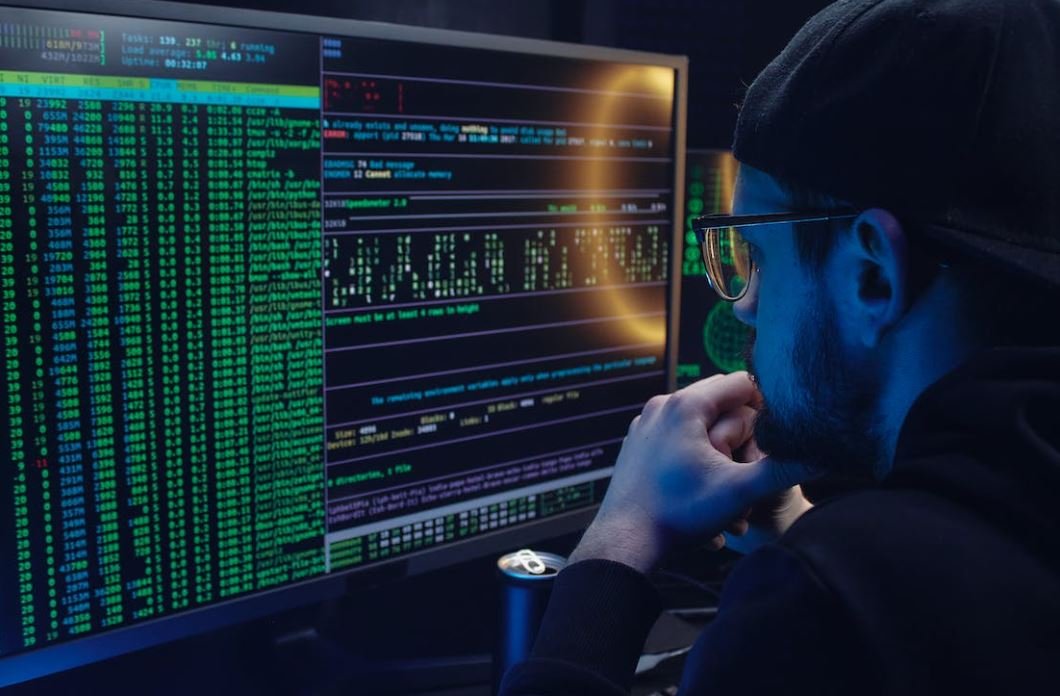How Do You Get a Video Footage of an Accident
Accidents happen without warning, and capturing video footage of the incident can be crucial for insurance claims, legal proceedings, or simply for your own record. Whether you were involved in the accident or a witness, obtaining video footage can help provide clear evidence of what transpired. In this article, we will explore various methods to obtain video footage of an accident.
Key Takeaways:
- Obtaining video footage of an accident is important for insurance claims, legal proceedings, and personal records.
- Witnesses and surveillance cameras are common sources of accident video footage.
- Reaching out to law enforcement and local authorities can help in accessing accident video recordings.
- Social media platforms and dash-mounted cameras can also provide valuable video evidence.
- Always respect privacy rights and adhere to legal procedures when obtaining video footage.
1. Contact Witnesses
If you were involved in an accident or witnessed one, reaching out to witnesses is a great starting point. Witnesses often capture accident videos on their smartphones and may willingly share the footage with you if approached politely. Ask for their contact information and kindly request the video, emphasizing its importance in resolving the case. Be respectful and understanding if they are hesitant to share the footage.
2. Surveillance Cameras
Many accidents occur in public places or near establishments equipped with surveillance cameras. These cameras can provide unbiased and objective video footage of the accident. If the accident happened in a commercial or residential area, approach the property owner or manager and explain the situation. They may be able to help retrieve the video footage or direct you to the appropriate authorities.
3. Law Enforcement and Local Authorities
Contacting law enforcement and local authorities can immensely aid in obtaining video footage of an accident. If the accident occurred on a public road or near a government facility, the police department or local authorities might have access to traffic cameras or other surveillance systems. Reach out to them formally, providing all necessary details and information about the accident. They can guide you through the process of obtaining the video footage.
| Types of Cameras | Pros | Cons |
|---|---|---|
| Surveillance Cameras | Objective footage, often covering wide areas. | May require permission or assistance from property owners. |
| Dash-mounted Cameras | Provide firsthand accounts, easily accessible footage. | Availability depends on the presence of a dash camera in the involved vehicles. |
4. Social Media Platforms
Social media has become a platform for sharing various types of content, including accident videos. People involved in accidents sometimes share video footage on platforms like YouTube, Facebook, or Twitter. Searching relevant hashtags or keywords related to the accident may lead you to accident videos posted by involved parties or witnesses. Reach out to the video poster respectfully, explaining your situation and requesting access to the footage.
5. Dash-Mounted Cameras
Today, many drivers use dash-mounted cameras in their vehicles. These cameras continuously record footage while driving, providing a firsthand account of any accidents that occur. If you or someone else involved in the accident has a dash-mounted camera, obtaining the video footage becomes easier. Contact the owner of the camera or the relevant authorities to gain access to the footage, ensuring it aligns with legal procedures.
| Platforms | Pros | Cons |
|---|---|---|
| YouTube | Large user base, videos can go viral. | Difficult to find specific videos without proper keywords. |
| Wide social network, easy communication with video posters. | Posts may be restricted to friends or specific groups. |
6. Respecting Privacy and Legal Procedures
While obtaining video footage of an accident is important, it is crucial to respect privacy rights and adhere to legal procedures. Do not invade someone’s privacy or illegally access video recordings. Always obtain consent from the parties involved and follow the appropriate legal channels when seeking video evidence. This ensures the admissibility and validity of the footage when required.
7. Documenting the Process
Throughout the process of obtaining video footage, it is essential to document your efforts. Keep a record of conversations, emails, and any other form of communication. This documentation can serve as evidence if any discrepancies or legal issues arise. It demonstrates your sincere intentions and compliance with ethical and legal standards.
8. Seek Professional Help if Needed
If you encounter difficulties in obtaining video footage or require professional guidance, do not hesitate to seek legal advice. Attorneys specializing in personal injury or accident cases have experience dealing with video evidence. They can provide valuable insights and assist you in navigating the legal complexities surrounding obtaining video footage of an accident.
Conclusion
Acquiring video footage of an accident can significantly impact insurance claims, legal proceedings, and personal records. By utilizing the various methods discussed in this article and respecting privacy rights, you can increase the chances of obtaining valuable video evidence. Remember to document your efforts and seek professional help if necessary.

Common Misconceptions
Misconception 1: It’s Easy to Get Video Footage of an Accident
One common misconception is that getting video footage of an accident is a straightforward process. However, this is not always the case. There are several challenges and factors that can make it difficult to obtain video footage:
- Privacy concerns may restrict access to video footage
- Video surveillance systems may have limited storage capacity, leading to footage being overwritten quickly
- Obtaining video footage from private properties or businesses may require legal consent or court orders
Misconception 2: All Accidents are Captured on Video
Another common misconception is that all accidents are captured on video. While the presence of surveillance cameras has increased over the years, it is not guaranteed that every accident will be caught on camera. There are a few reasons why video footage may not be available:
- Accidents may occur in areas without surveillance cameras
- Surveillance cameras may not be functioning properly or pointed in the right direction
- In some cases, accidents happen too quickly for nearby cameras to capture them
Misconception 3: Retrieving Video Footage is a Quick Process
Many people assume that retrieving video footage of an accident is a quick and straightforward process. However, it can often be quite time-consuming and complicated. Some reasons why it may take time to retrieve video footage include:
- Searching through hours of footage to find relevant sections
- Dealing with video format compatibility issues and technical glitches
- Coordinating with authorities, property owners, or businesses to obtain access to the footage
Misconception 4: Video Footage Provides Clear and Undeniable Evidence
While video footage can be valuable evidence, it is essential to recognize that it does not always provide clear and undeniable evidence in accidents. There are factors that can affect the quality and interpretation of the footage:
- Low-quality or grainy footage may make it challenging to identify key details
- Poor lighting conditions can impact the clarity of the video
- The angle and distance of the camera can affect the perspective and accuracy of the footage
Misconception 5: Video Footage is Always Admissible in Court
Some people believe that video footage of accidents is always admissible in court as evidence. However, this is not always the case. Several factors can influence the admissibility of the evidence:
- The chain of custody of the footage may be questioned
- The authenticity of the footage may be challenged
- Legal requirements for obtaining and presenting video evidence may vary by jurisdiction

Introduction
Video footage of accidents has become increasingly important in various areas such as insurance claims, law enforcement, and accident reconstruction. This article explores different ways to obtain video footage of accidents, including various sources and methods. The tables below provide additional data and information to enhance our understanding of this topic.
Table: Common Sources of Video Footage
In order to obtain video footage of accidents, it is essential to know where to look. The following table outlines some common sources:
| Source | Description |
| —— | ———– |
| Traffic Cameras | Government-operated cameras installed in strategic locations to monitor traffic flow. |
| Security Cameras | Surveillance cameras installed in private establishments, such as businesses, homes, or public areas. |
| Dashcams | Cameras mounted on the dashboard or windshield of vehicles, which record the driver’s perspective. |
| Mobile Devices | Video recordings captured by individuals at the scene of the accident using their smartphones or tablets. |
| Police Body Cameras | Law enforcement officers equipped with cameras worn on their bodies, capturing video evidence. |
| Roadside Cameras | Cameras installed by transportation departments along roadways for monitoring and traffic control purposes. |
Table: Legal Considerations
Obtaining video footage of accidents can involve certain legal considerations, as summarized in the table below:
| Consideration | Description |
| ————- | ———– |
| Privacy Laws | Ensure compliance with local laws regarding the collection and use of video surveillance footage. |
| Consent | Obtain proper consent from involved parties or witnesses before using their video recordings as evidence. |
| Chain of Custody | Maintain the integrity of the video footage chain of custody for legal proceedings. |
| Right to Access | Familiarize yourself with laws or regulations that grant access to certain types of video footage. |
Table: Methods to Obtain Video Footage
In addition to understanding the sources, various methods can be employed to obtain video footage of accidents:
| Method | Description |
| —— | ———– |
| Public Requests | Submit requests to government agencies or organizations responsible for managing public camera systems. |
| Freedom of Information Act (FOIA) | Utilize FOIA to access accident-related footage from government agencies. |
| Private Requests | Contact private establishments (businesses, homes, etc.) to request access to their surveillance footage. |
| Social Media | Monitor social media platforms for user-generated content related to the accident. |
| News and Media | Reach out to news organizations that often report on accidents and may have obtained video footage. |
Table: Challenges in Obtaining Video Footage
Acquiring video footage of accidents might come with certain challenges, as highlighted below:
| Challenge | Description |
| ——— | ———– |
| Limited Coverage | Not all accidents occur within the range of surveillance cameras, reducing the chance of obtaining footage. |
| Storage Limitations | Video footage may be automatically overwritten or deleted after a certain period, limiting retrieval options. |
| Video Quality | Poor video quality due to low-resolution cameras or environmental conditions might affect usability as evidence. |
| Accessibility Barriers | Some sources of footage may have restricted access, hindering the retrieval process. |
| Date and Time Accuracy | Ensuring that the video footage precisely aligns with the accident’s date and time can be challenging. |
Table: Importance of Obtaining Video Footage
There are several reasons why obtaining video footage of accidents is crucial, as summarized in the table below:
| Importance | Description |
| ———- | ———– |
| Accurate Documentation | Video footage provides a visual account, helping establish the sequence of events and determining liability. |
| Objective Evidence | Video footage presents an unbiased record of the accident, reducing reliance on subjective testimonies. |
| Insurance Claims | Video evidence can expedite insurance claims by providing clear documentation of the accident’s circumstances. |
| Investigations and Prosecutions | Video footage aids law enforcement investigations and supports criminal or civil prosecutions. |
| Accident Prevention | Analyzing video footage helps identify patterns and causes, leading to the implementation of preventive measures. |
Table: Data on Video Accident Evidence
Studies and research provide insights into the role and prevalence of video footage in accident-related cases:
| Study | Findings |
| —— | ——– |
| “Video Evidence and Its Impact on Criminal Justice” | 65% of prosecutors reported that video evidence is frequently important to successful prosecutions. |
| “The Influence of Video Evidence” | 75% of insurance companies agreed that video footage is essential in investigating accident claims. |
| “Effectiveness of Video Cameras in Cars” | In-car cameras reduced crash frequencies by 47% and crash-related claims by 40%. |
Table: Case Examples
Real-life cases demonstrate the significance of video footage in accident-related scenarios:
| Case | Description |
| —- | ———– |
| Hit-and-Run Collision | Video footage captured by a traffic camera aided in identifying the suspect’s vehicle and led to their arrest. |
| Insurance Fraud | Surveillance footage revealed false claims and resulted in convictions for attempted insurance fraud. |
| Intersection Accidents | Dashcam recordings provided essential evidence to determine fault and clarify the events leading to the accident. |
Table: Best Practices for Handling Video Footage
To ensure the integrity and admissibility of video footage, implementing best practices is essential:
| Practice | Description |
| ——– | ———– |
| Proper Preservation | Store video evidence in a secure and tamper-proof manner to maintain its authenticity. |
| Documentation | Document the location, date, and time of video footage acquisition to establish a clear chain of custody. |
| Redaction and Anonymization | When necessary, blur or redact certain individuals’ faces or sensitive information to protect privacy. |
| Expert Analysis | In complex cases, consult with video forensic experts to analyze and enhance footage for further investigation. |
| Admissibility Standards | Familiarize yourself with the legal prerequisites for video evidence to be admissible in court. |
Conclusion
Obtaining video footage of accidents can yield valuable evidence that plays a crucial role in various domains, from insurance claims to legal investigations. By understanding the sources, methods, and challenges associated with acquiring video footage, individuals and organizations can effectively navigate the process. Furthermore, the importance of video evidence, supported by studies and case examples, highlights the significance of incorporating such visual documentation. Adhering to best practices ensures the integrity and usability of the video footage in legal proceedings. As technology advancements continue, video footage remains an indispensable tool for accurate accident documentation and prevention.
Frequently Asked Questions
How can I obtain video footage of an accident?
To obtain video footage of an accident, you can try the following steps:
1. Contact local authorities or law enforcement agencies who may have been involved in investigating the accident. They may have access to available footage.
2. Reach out to businesses or establishments near the accident location that may have surveillance cameras. They might have captured the incident or have information on where to find relevant footage.
3. Consider consulting with an attorney who specializes in personal injury cases. They can guide you on the legal processes involved in obtaining video evidence.
4. If the accident occurred on a public road or highway, you could file a public records request with the local transportation or highway authority to obtain relevant video footage if available.
What should I do if I am involved in an accident and need video footage for insurance claims?
If you are involved in an accident and require video footage for insurance claims, follow these steps:
1. Immediately report the accident to your insurance company.
2. Provide them with any available details about the accident and mention your interest in obtaining video footage if it exists.
3. If you are aware of any nearby businesses or establishments with surveillance cameras, inform your insurance company so they can assist in obtaining the footage.
4. Cooperate with the insurance company‘s investigation process and provide any additional information or documentation they request.
Are there any legal requirements to obtain video footage of an accident?
To obtain video footage of an accident, you must adhere to applicable legal requirements, such as:
1. Following any procedures or guidelines set by law enforcement or local authorities when requesting footage.
2. Ensuring you have a valid legal reason for obtaining the footage.
3. Respecting the privacy rights and regulations regarding the use and dissemination of the footage.
4. If necessary, consult with an attorney to ensure you are complying with all legal requirements and procedures.
What can I do if the video footage of the accident is unavailable or deleted?
If the video footage of the accident is unavailable or deleted, you can consider the following steps:
1. Contact any nearby businesses or establishments that may have captured the incident on their surveillance cameras. They might still have relevant footage available.
2. Speak with witnesses who were present at the scene of the accident. They may have seen what happened and can provide valuable information.
3. If applicable, consult with an attorney to explore alternative options for obtaining evidence that can support your case.
Can I use video footage of an accident as evidence in a legal case?
Yes, video footage of an accident can be used as evidence in a legal case, such as a personal injury claim or a criminal proceeding. It can help establish the events that took place, determine liability, and support your case’s credibility. However, it is essential to ensure the footage is authentic, properly obtained, and admissible in court. Consult with an attorney to understand how to effectively introduce video evidence in your specific legal situation.
Can I request video footage of an accident from a private property owner?
Yes, you can request video footage of an accident from a private property owner if the accident occurred on their property or in their vicinity. However, it is at the owner’s discretion to provide the footage voluntarily, as long as it doesn’t violate any privacy laws or regulations. If the property owner refuses to provide the footage, you may need to explore other legal means or seek assistance from an attorney.
How can I preserve video footage of an accident for legal purposes?
To preserve video footage of an accident for legal purposes, you should:
1. Make multiple copies or backups of the original footage.
2. Maintain a chain of custody for the copies, ensuring they remain unaltered and secure.
3. Store the copies in a safe and secure location, preferably in a format that allows easy access for viewing and analysis.
4. Consult with legal professionals to ensure you are following the appropriate procedures for preserving and presenting video evidence in your specific legal case.
Is video footage from traffic cameras available to the public?
The availability of video footage from traffic cameras to the public depends on various factors, including local laws, privacy regulations, and the reason for accessing the footage. In some cases, video footage from traffic cameras may be accessible through public records requests or by contacting the relevant transportation or traffic authorities. However, every jurisdiction may have its own rules and regulations regarding the release of such footage.
What should I do if I find video footage of an accident online?
If you come across video footage of an accident online, consider the following actions:
1. Preserve the evidence by taking screenshots or recording the video.
2. Make note of any information associated with the footage, such as the location, date, or source.
3. Consult with legal professionals or law enforcement, especially if you believe the video may be relevant to an ongoing investigation or legal case.
4. Be cautious when sharing or distributing the video, ensuring you are not infringing on any privacy rights or jeopardizing the legal process.
Can I share video footage of an accident on social media?
While it is possible to share video footage of an accident on social media platforms, it is crucial to exercise caution and consider legal implications. Sharing such footage may potentially infringe on privacy rights, compromise ongoing investigations, or interfere with the legal process. Before sharing any video footage on social media, consult with legal professionals or your attorney to ensure you are following the appropriate procedures and not violating any laws or regulations.




